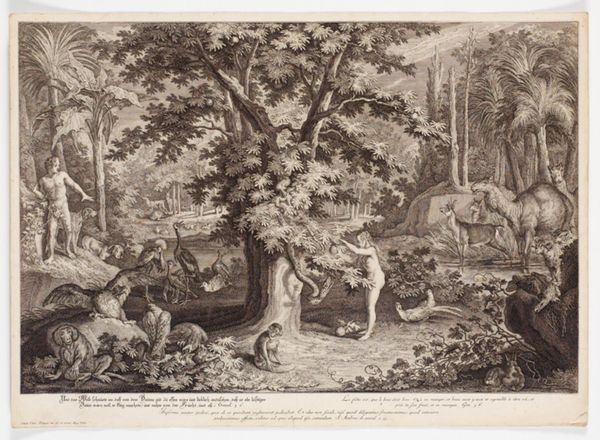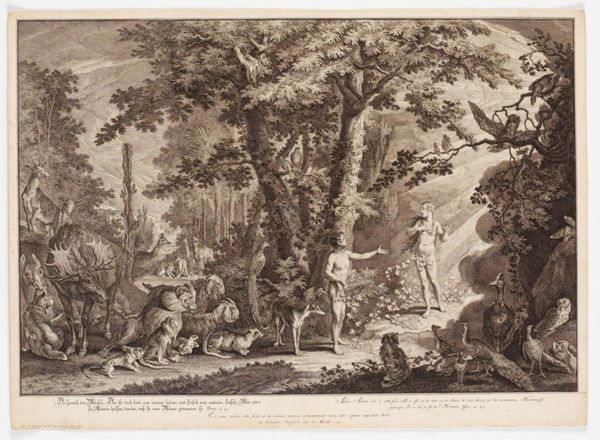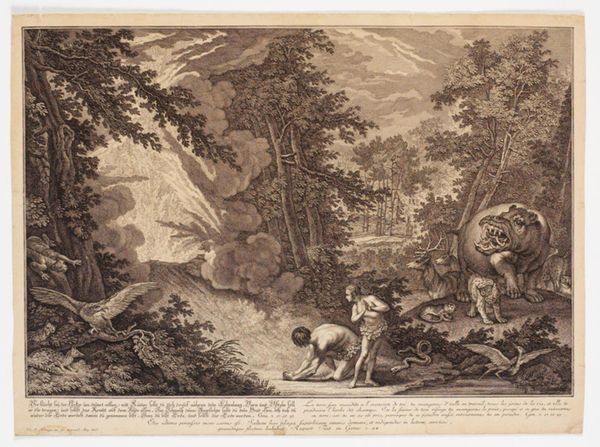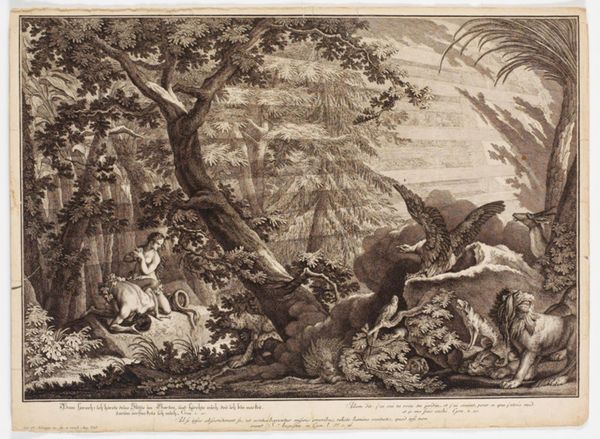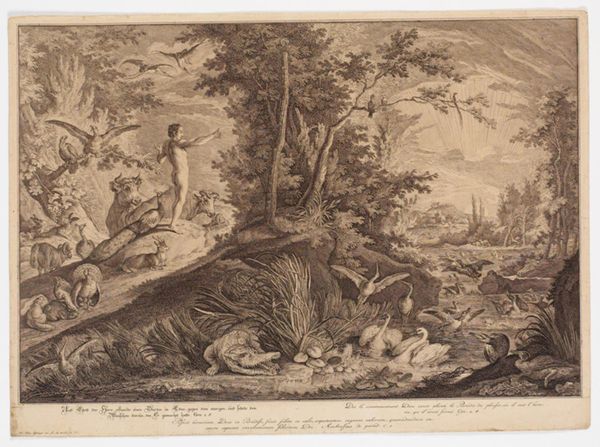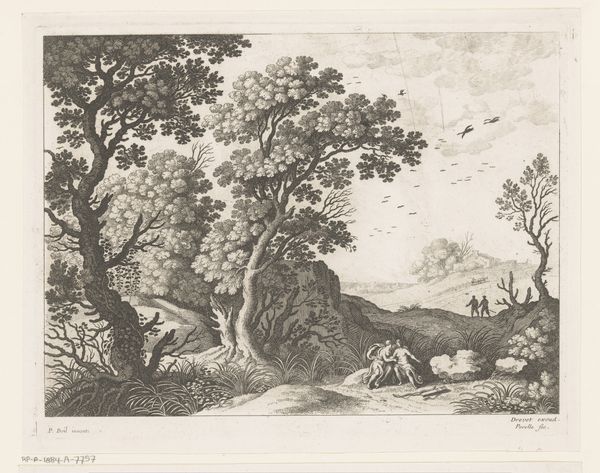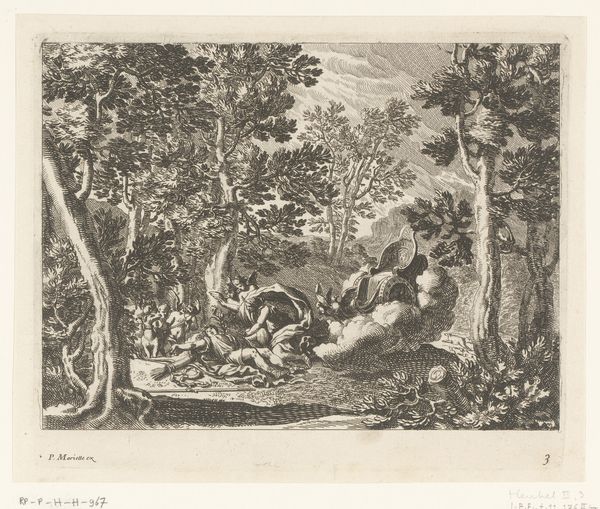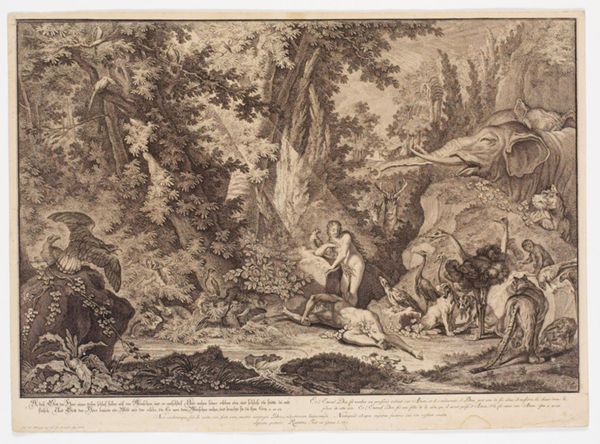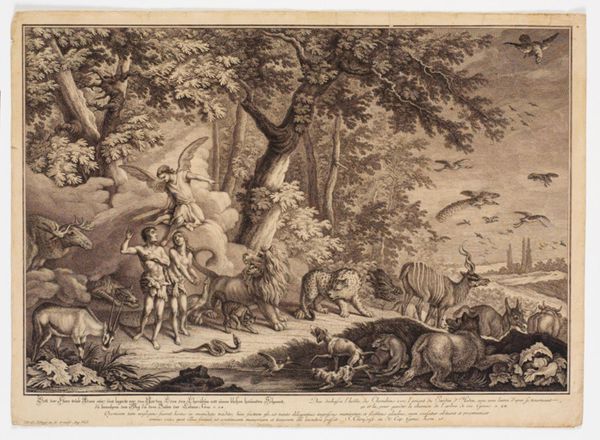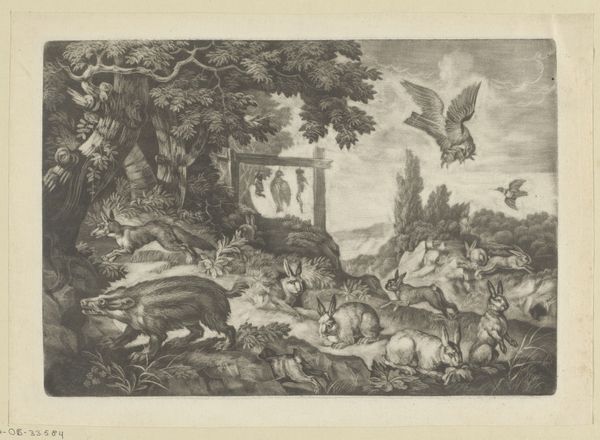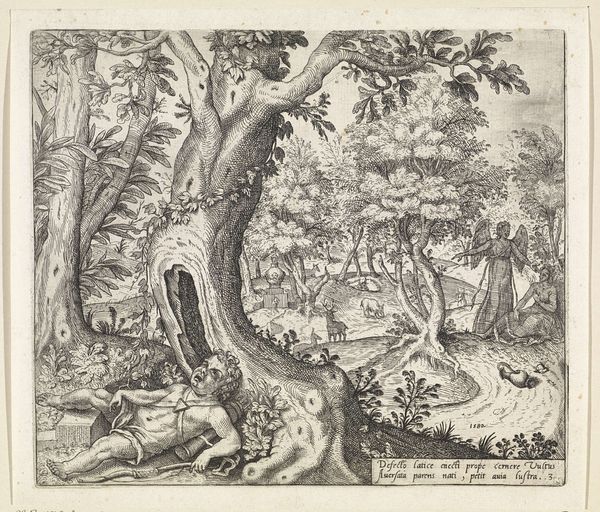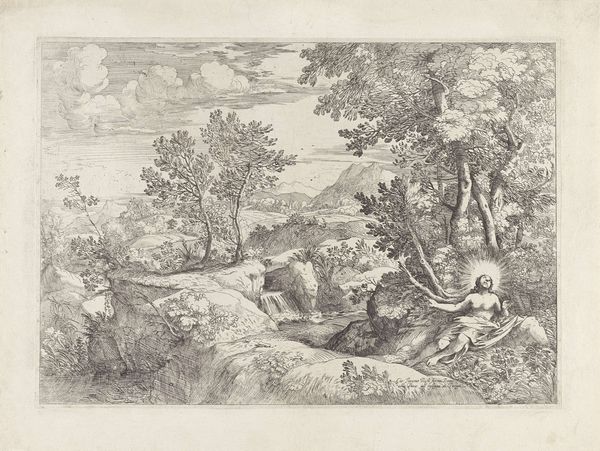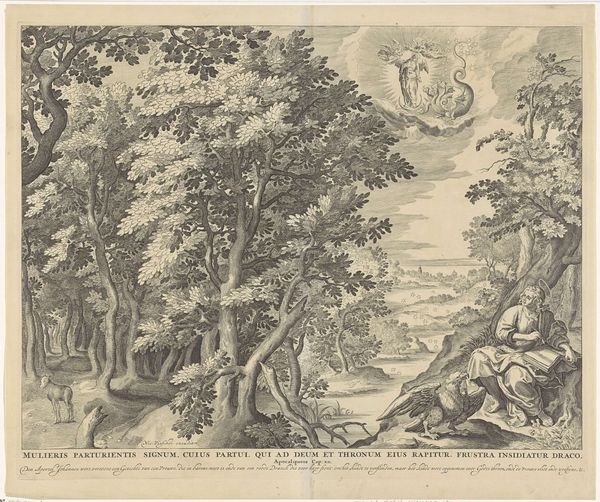
Gud forbyder Adam at spise af kundskabens træ 18th century
0:00
0:00
print, engraving
#
baroque
# print
#
landscape
#
figuration
#
history-painting
#
engraving
Dimensions: 393 mm (height) x 540 mm (width) (bladmaal)
Curator: Here we have Johann Elias Ridinger’s 18th-century engraving, "Gud forbyder Adam at spise af kundskabens træ," depicting God forbidding Adam to eat from the Tree of Knowledge, rendered in print on paper, located at the SMK. Editor: It feels as though we're looking at a stage, almost like a play. I’m interested in what the composition tells us. What do you see when you look at this piece? Curator: Immediately, my eyes are drawn to the dichotomy created through the artist’s use of light and shadow. Notice how the ethereal light from the upper-left softly illuminates Adam, thereby emphasizing his vulnerability, while a stark shadow to the right obscures several animal figures, creating a zone of mystery and uncertainty. How does that tension play into the narrative for you? Editor: That's a clever observation. The composition does feel loaded. With Adam bathed in light and foregrounded, and the chaotic grouping of animals obscured by shadow and distance, could this speak to his interior struggle? His choice, highlighted and distinct from the natural world, muddled, lurking in the shadows. Curator: Precisely. Consider too, the positioning of Adam. He kneels, perhaps in supplication or defeat. His posture conveys a sense of surrender. Note the stark contrast between the smooth lines defining Adam's body, the textural richness in the rendering of leaves and bark, achieved through Ridinger’s precise engraving. Editor: It's impressive how much depth and nuance is created with line work alone. It definitely enhances the emotional impact, separating Adam and emphasizing the looming decision and its potential consequences. I hadn't considered the textural dimension so explicitly. Curator: Indeed. Ridinger’s skillful use of light, shadow, and line all function to elevate the drama of the biblical narrative. This close visual reading allows for richer interpretation of the artwork's formal and narrative elements. Editor: I agree. I’ll certainly pay more attention to these intrinsic elements going forward, like the dramatic effect of composition on how the story comes to life in a visual medium.
Comments
No comments
Be the first to comment and join the conversation on the ultimate creative platform.
